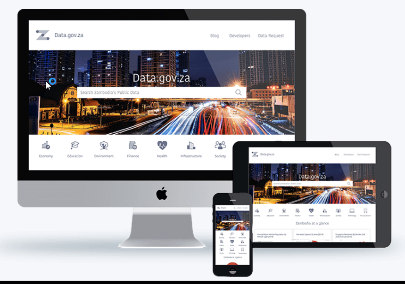This is the second post of our series of Supply Chain digital transformation posts. The first focused on the use of Low Code/No Code for Supply Chains and Logistics. In this second post, we focus on an extremely important topic that is particularly relevant to the Supply Chain. That is the modernization of Supply Chains which provide solutions and access consistently across multiple channels.
To set the stage, even as enterprises embark upon digital transformation journeys through enabling digital technologies like Low Code/No Code, there are still many incumbent enterprise platforms – including mainframes! – and resource planning (ERP), point solutions, legacy databases, and home-grown legacy systems, that are difficult to understand, maintain, or change.
In most cases, putting “lipstick on the legacy platform, application, and/or database pig” does not work. These systems are typically systems of record. They are essential to “keep the lights on.” The problem is, they are difficult to maintain and not suited for modernization or digital transformation.
Get valuable tips on how to distinguish between a mainframe and a standalone system in this IBM iSeries mainframe article.
Challenges to Modernizing the Supply Chain
There are many reasons why organizations need to modernize. The following highlights the pain points associated with legacy systems for Supply Chains. The primary issue is that often within an organization, each sub-organization on the “chain” of suppliers and components across multiple tiers has databases, systems of record, and customized legacy code that impede responsiveness, agility, and even innovation. Here are some of the challenges enterprises encounter when they seek to modernize:
Traceability with Connected Supply Chains and logistics
Covid-19 stressed Supply Chains worldwide. That resulted in many challenges for consumers as well as manufacturers. This is especially true in light of the worldwide silicon chip shortages. Optimizing supply chains is critical for healthcare, consumer goods, as well as manufacturing.
IT Overwhelmed with Maintenance–Not Innovation
Often, organizations have hundreds of legacy systems and databases and millions of lines of home-grown code. Unfortunately, that code needs to be maintained. In some organizations, upwards of 80% of the IT budget is spent maintaining legacy code or legacy systems. This is one of the reasons why IT has a project backlog and cannot keep up with the demands of the business.
Retiring Knowledge Workers and Experts
Some legacy systems are home-grown programs written by older programmers who are due to retire. Think of procuring and sustaining, say, expert IBM iRPG programmers who have deep knowledge of the language! It is difficult to do, and this disappearing workforce keeps the policies and the procedures, as well as the know-how to work with these legacy systems in their heads. Since the code is typically undocumented, there is a real danger of losing the embedded reasoning and business logic.
Fossilized Business Logic that is difficult to customize
ERP or point solutions are closed systems. Their business processes and business logic is both hidden and difficult to change. Commonly, with these solutions, there is an initial honeymoon period, where the solution seems to fulfill business requirements. However, very soon the need for customization and specialization becomes apparent, and the ERP and point solutions prove difficult to extend and customize.
You can find out more about ERP, from our article; What is ERP?
Manual Intervention to Handle Exceptions
In advanced organizations, exceptions are the rule. ERP or legacy systems can raise the exceptions, or they can go unnoticed with dire consequences. To deal with these receptions, enterprises need knowledge workers to handle complex decisions. For instance, assessing potentially fraudulent supply chain transactions, approving large financial transactions, or processing applications that have unconventional cases all need to involve workers who are knowledgeable about the policies and procedures required to deal with these exceptions.
To address these and other legacy challenges, organizations embark upon legacy modernization initiatives. Unfortunately, these initiatives often fail.
Now more than any other time, Supply Chain multi-tier partners need complete modernization (aka Digital Transformation) of their Supply Chain applications with enhanced visibility, traceability, and agility to change the applications or even innovate. The ability to leverage any channel for this visibility and traceability is critical. They need a solution that modernizes their legacies while allowing omnichannel interactions.
Omni-Channel Modernization

Omni means “all-encompassing”. In the context of the Supply Chain, it means, consistently supporting different channels and all modes of interactions between a supplier and the various participants in any tier of the supply value chain.
This means a supplier, an OEM, a warehouse manager, a logistics organization, and the end retailer can interact with the supply chain as needed. They have consistent access via a browser, mobile device, service representative, IVR, or other channel. This “consistency” means that the experience of each stakeholder is identical unless there is a reason to provide a different channel-dependent experience.
For example, the procurer of a part can get a discount or promotion independent of the channel. Omni also means they can start an interaction through one channel and then switch to continue through another seamlessly — all while maintaining the context of the interaction. As another example, when completing an insurance or supplier delivery application, an insurer or claimant interaction can start in one channel (say a tablet) and move to another channel (e.g. a browser) with full context.
Get tips on how to justify an application modernization initiative in this IBM CFO article.
A Three-layer Architecture for Omni-Channel and Low Code legacy Modernization
The following illustrates a high-level, three-layer architecture for Omni-Channel and Low Code legacy modernization. At the lowest layer, you have the legacies that can involve data center mainframes (like IBM i), ERP systems, and many databases – all supporting the supply chain solution or any of the participants.

The middle layer is the Low Code/No Code platform that we discussed in the previous blog. The top layer is the Omni-Channel layer. Increasingly progressive UX/UI is critical here, but there are other channels: social, automated bots, and AI-assisted human agents. This is an especially important layer for legacy modernization.
Organizations typically have multiple legacy applications, ERP systems, and databases. They need to continuously extend these with customization and exception handling code. The traditional approach is to do the customization using archaic languages such as C, Java, and in many cases, even RPG for platforms such as IBM i.
Now, however, with a new generation of modern Low Code platforms such as LANSA, you can seamlessly leverage, extend or modernize legacy code much more easily, with visual paradigms and easier to use 4GL. Furthermore, LANSA supports powerful progressive web application development that is essential for omni-channel Supply Chain solutions.
Supply Chain Digital Transformation for Modernization: The Journey
Digital Transformation is not easy. As noted above, many legacies: platforms, databases, ERP systems of record, run the mission critical Supply Chains – which themselves are tremendously complex and involve many participants and stakeholders across multiple tiers.
A Chain is as Strong as its Weakest Link.
Often these weakest links stem from intra-enterprises or inter-enterprise silos. Silos have many sources: business units, functional units and platforms or applications. Many organizations often replicate and distribute supplier information across multiple tiers and databases.
Here are some pragmatic steps to embark upon a robust modernization journey – with some recommendations.
Think Big – Think Transformation but Start Small
Often Digital Transformation initiatives fail due to “Big Bang” approaches that take many months and even years without showing business value. A much better approach – especially for complex applications such as Supply Chain – is to balance business value with ease of implementation. This approach identifies the “low hanging fruits” for Supply Chain optimizations. Contact LANSA for a consultative and solution-oriented session to help you identify the Low Hanging Fruits for Supply Chain modernizations.

Have a Master Data Management Strategy and Solution
According to the MDM Institute: “Master Data Management (MDM) is the authoritative, reliable foundation for data used across many applications and constituencies. The goal is to provide a single view of the truth no matter where it lies. A lack of that single source of truth results in poor, erroneous, and even risky decisions.” Supply Chain solutions are only as good as the consistency of their data. There are challenges within (intra) organization silos as well as across (inter) the Supply value chain:
For Customers, Products, Pricing, Partners, Suppliers, Services, and other Master Data shared across applications, different siloed systems often contain contradictory information. There is a lot of waste attempting to keep heterogeneous data consistent and high-quality.
Mergers and Acquisitions also create data consistency challenges. A single version of the truth about a customer or offering is necessary across the organization.
With LANSA you can achieve all the benefits of a single version of the truth – the core value proposition of MDM – at the Low Code layer. There is no need to replicate or deal with expensive and complex MDM solutions.
Learn more about how to improve your data management strategy in this article on IBM MDM.
Supply Chain Competency Center (SC CC)
To succeed, organizations involved in complex Supply Chains need to also develop a Competency Center (aka Center of Excellence). This Competency Center must have the necessary budget and empowerment. The most important focus of SC CC is to balance speed of development and innovation with best practices (security, reliability, performance, etc.). The following are with are within the scope of a SC CC:
Governance in Enabling 2 Speed IT
Innovation speed and maintenance; enablement and governance through the SC CC. Organizations must balance transforming slower, transactional legacy systems with developing new fast-speed architecture.
Driven by measurable SC Continuous Improvement:
The continuous monitoring and improvements with various types of optimizations of agreed upon KPIs for the SC is very much a core competency and focus for the SC CC.
Leveraging the Low Code Platform:
Enablement, training, and education of the benefits of Low Code are also key capabilities of the SC CC.
There are others. If you are interested in establishing an SC CC and understanding how it relates to your other CCs, contact LANSA.







